The Battle of High-End Chronographs Part 3 – Patek vs. Lange… The Verdict
Two of the best high-end, hand-wound chronograph watches, face-to-face!
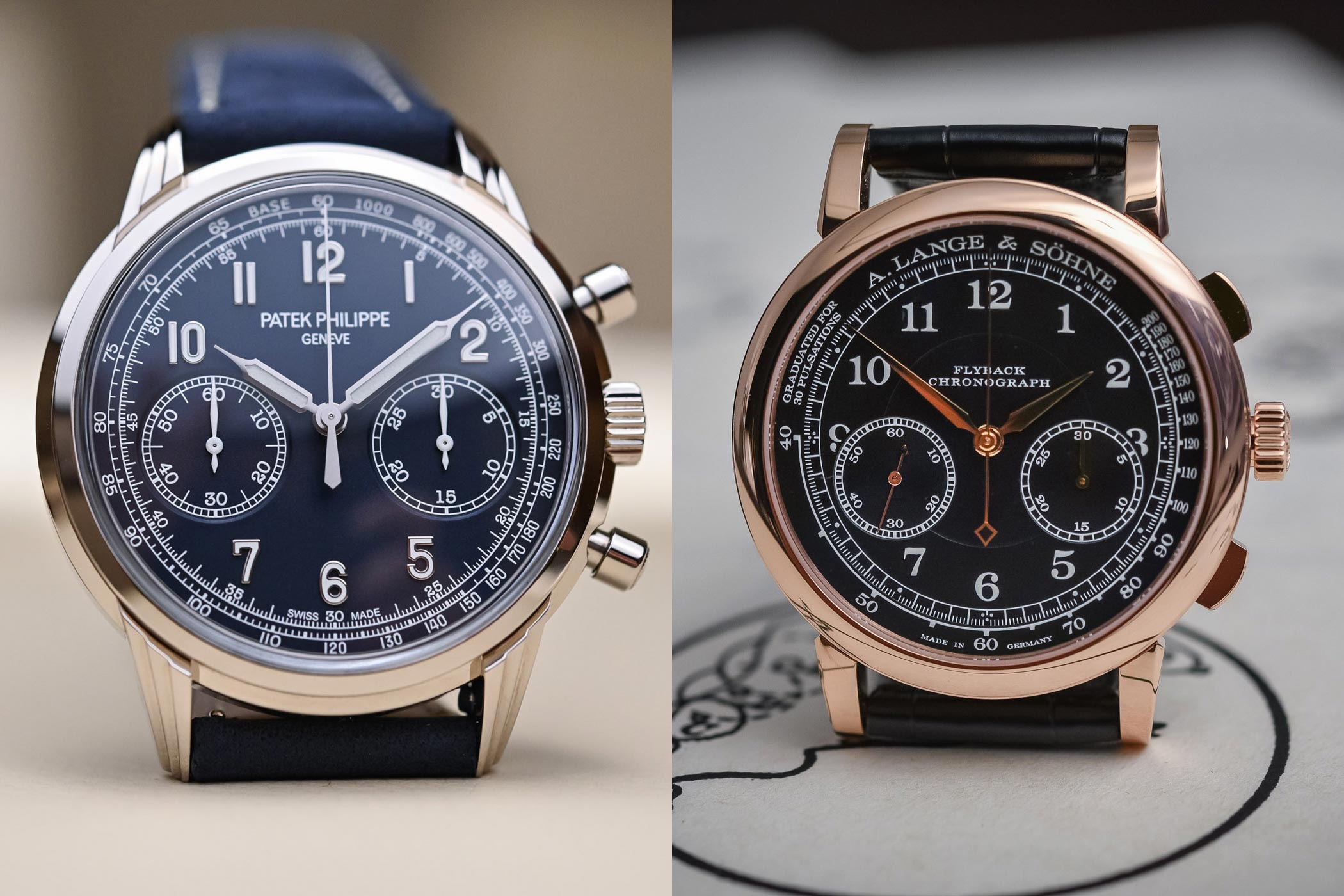
Having reviewed both the A. Lange & Söhne 1815 Chronograph and the Patek Philippe Chronograph 5172G manual-winding chronographs in previous days, today it’s time for a face-off between these two premium contenders. Both are undeniably beautiful examples of the ‘pure-chronograph-no-additional-complications genre’ and both are impeccably crafted. But they are as different as chalk and cheese, so please, take a ringside seat and see if you agree with our verdict in the battle of high-end chronographs pitting the Lange versus the Patek.
Case Size, Presence and Material
Patek Philippe’s ref. 5172G has a 41mm diameter and a height of 11.45mm, A. Lange & Söhne’s 1815 Chronograph measures 39.5mm with a height of 11mm. Both models feature lateral pushers for the chronograph functions, but that’s about where the similarities end.
Although the Patek is slightly larger than the Lange, it sits flatter on the wrist thanks to the stepped design of the case and tapered lugs. The Lange is ‘fleshier’ if you like, with rounded, plumper surfaces that rise up to meet the gaze. The pushers on the Patek are piston or mushroom-style and poke out beyond the crown. The pushers on the Lange are rectangular and don’t surpass the crown. Obviously, the look and feel is entirely different. The Patek looks sportier and more retro, the Lange is classier and more traditional.
Another salient feature that had Patek fans going wobbly at the knees are those fabulous tiered lugs. Reminiscent of Art Deco styling, the three-stepped lugs consolidate the vintage vibe of the watch and attenuate the dimensions of the watch.
Case material plays an enormous role in the personality of a watch and the choice of 18k white gold for Patek’s chronograph is by far a sportier choice than the opulent 18k pink gold chosen for the Lange. The weight of both watches is reassuringly luxurious.
Conclusion: Although the Patek is larger all round, it sits flatter on the wrist than the Lange and exudes a sportier, intentionally retro character. The Lange is more stately, more traditional, and has a heftier, more opulent presence.
Functionality and handling
The Patek ref. 5172G was introduced in March 2019 to replace the longstanding and much-loved ref. 5170 chronograph. Fitted with the same in-house manual-winding movement as its predecessor – calibre CH 29-535 PS – the Patek is a traditional column-wheel chronograph activated by two pushers on the side of the case. The Lange is also a traditional column-wheel chronograph but with the extra functionality of being a flyback chronograph (combining the stop, reset and restart in one single operation allowing instant consecutive timings). Another extra feature of the Lange is the precisely jumping minute counter in the sub-dial just below 3 o’clock that advances in 1-minute increments when the chrono is running.
As mentioned, the style of the pushers is radically different on both watches. Patek uses small, vintage piston-style pushers while Lange relies on larger, more subtle rectangular pushers. As you would expect from names like Patek and Lange, the response of the pushers is buttery smooth. However, the entire MONOCHROME team agrees that the handling of the pushers on the Lange is ‘sublime’, probably the smoothest on the market today.
Conclusion: With its flyback chronograph function and precisely jumping minutes counter, the Lange offers more functionality than the Patek. The response of the chronograph pushers is excellent in both cases, although the Lange is out-of-this-world perfect.
Contemporary Blue versus traditional black
Again, the colour and styling of the dials underline the distinct mood of both watches. The Patek features a handsome and on-trend navy blue dial with crisp white markings. The inclusion of a peripheral tachymetre scale emphasises its sporty timing nature. However, what truly sets the dial of this new-generation chronograph apart from its predecessor, the 5170, is the generous amount of lume on the numerals and hands. The numerals are no longer classic ‘Breguet-style’ but simpler, more elementary numerals that dress the watch down. The vintage mood is further consolidated with the cool syringe-style hands and the box-shaped sapphire crystal over the dial.
The Lange conveys a very different, more formal personality. The inky black dial and pink gold case are unabashedly luxurious and not for the faint of heart. Like all members of the 1815 family, the chronograph features the symmetrical layout, Arabic numerals and railway-track scales that recall the founder’s elegant pocket watches. Instead of a sporty tachymetre scale, the 1815 Chronograph displays a charming yesteryear pulsometer scale. The pink gold hands are designed to match the case and there is not a trace of lume.
Conclusion: Two chronographs with two very different temperaments: the Patek pursues a cool vintage vibe and is altogether sportier and more casual than the Lange; the 1815 Chronograph is stately, dressy, traditional and infinitely more formal.
Manual-winding column-wheel chronograph movements
Ref. 5172G is equipped with Patek’s milestone movement, calibre CH 29-535 PS. Five years in the making and covered by six patents, manual-winding calibre CH 29-335 PS was a proud milestone for the brand replacing the refined architecture of the Nouvelle Lemania-based calibre CH 27-70 (loved by collectors) that PP had been using for its chronographs since the 1980s. Entirely conceived and produced in-house, calibre CH 29-535 PS made its debut in 2009 on board a women’s watch, and a year later in 2010, in the men’s ref. 5170J. Running at a modern 4Hz/28,800vph frequency and offering a power reserve of 65 hours, the movement has a diameter of 29.6mm and lean height of just 5.35mm. Finished with great care in keeping with the mandates of the Patek Philippe seal, you can see the hand-chamfered and polished edges of the bridge with Côtes de Genève ornamentation, the circular graining, the gold chatons, the perfectly finished levers and the distinctive cap covering the column wheel.
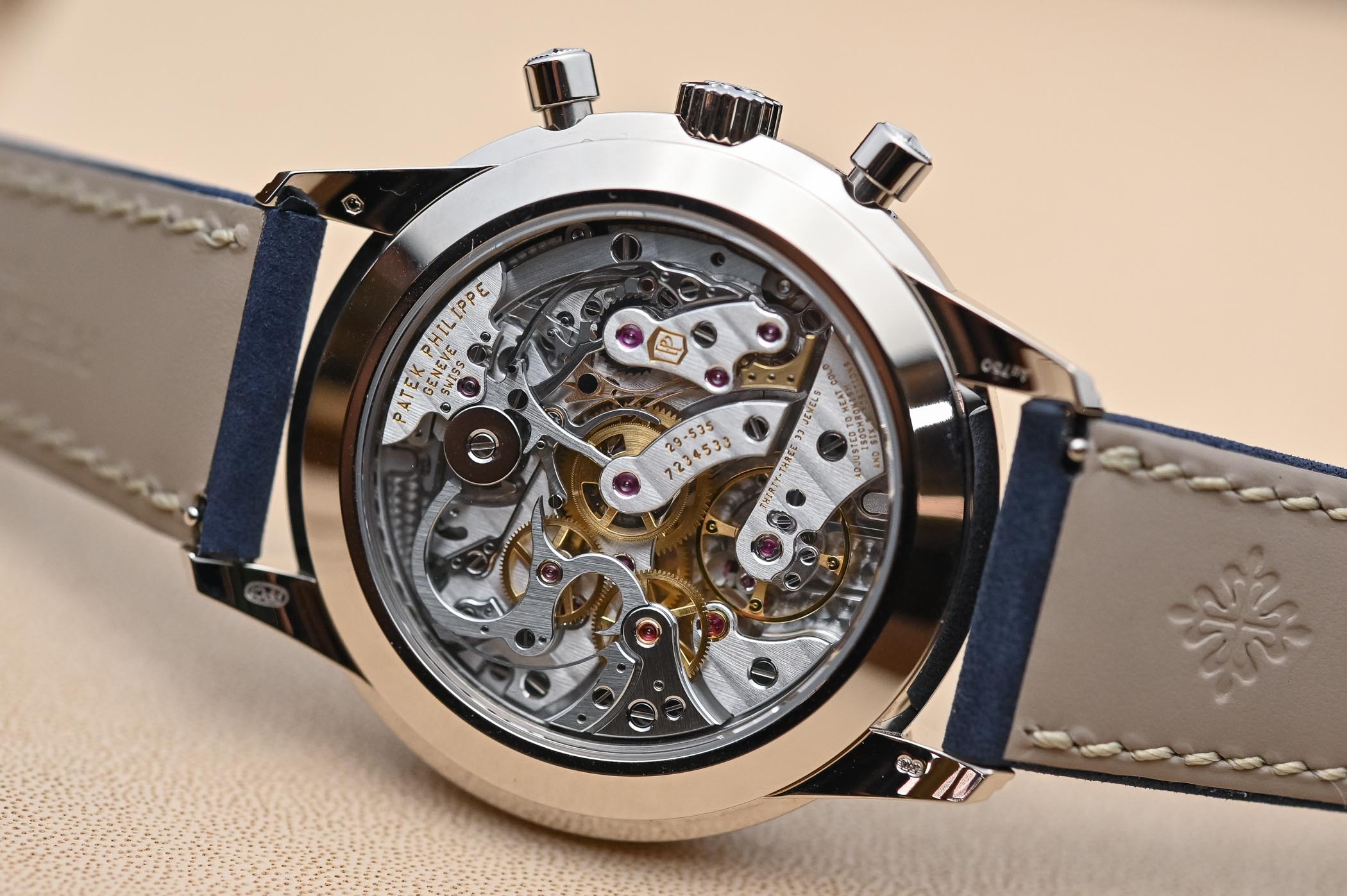
The 1815 Chronograph also uses a pre-existing calibre and is fitted with L951.5, a similar movement used on the Datograph – without the outsize date and power reserve indicator. Lavishly finished by hand with all Lange’s hallmark touches, the architecture of the movement is as graceful as it is complex. With no three-quarter plate to obstruct the view, you have an open view of a marvellous multi-level metropolis buzzing with levers, gears, springs and wheels to animate the flyback chronograph. Beating at a slower 2.5Hz/18,000vph and with a power reserve of 60 hours, this movement has a diameter of 30.6mm and is 6.1mm thick.
Conclusion: Patek’s calibre CH 29-535 PS might be a more modern and technically superior movement to the more traditional L951.5, but the composition and eloquent finishes on Lange’s Calibre L951.5 are undeniably superior. Patek’s movement is decorated with just enough flourishes to obtain its own in-house seal but it doesn’t offer the intricate level of hand-finishes and visual complexity of the Lange.
Price
The Patek Philippe Chronograph ref. 5172G retails for EUR 66,870. The A. Lange & Söhne 1815 Chronograph retails for EUR 51,000.
Conclusion: That’s a difference of around EUR 15,000 and both chronographs are regular production models. Probably not a huge amount if you playing in this kind of upmarket league but some might conclude that you are getting ‘more chronograph’ for the money with the Lange.
Verdict
(Editor’s note: keep in mind that the verdict here is based on Rebecca’s personal preferences.)
I’ve learned my lesson about making comparisons between watches and car brands in the last face-to-face article featuring annual calendars. Thanks to you all for your comments and learned input!
Given the choice, I would go for the Lange 1815 Chronograph. I admit that both models are beautiful but the contrast between the striking pink gold case and inky black dial, the silky smooth handling and (almost indulgent) opulence on the dial and movement side of the1815 won me over. Some might criticise the lack of contrast on the chronograph hands, but that is a minor consideration for me. The movement powering this watch is truly a work of art and if it’s good enough for master watchmaker Philippe Dufour, it’s good enough for me!
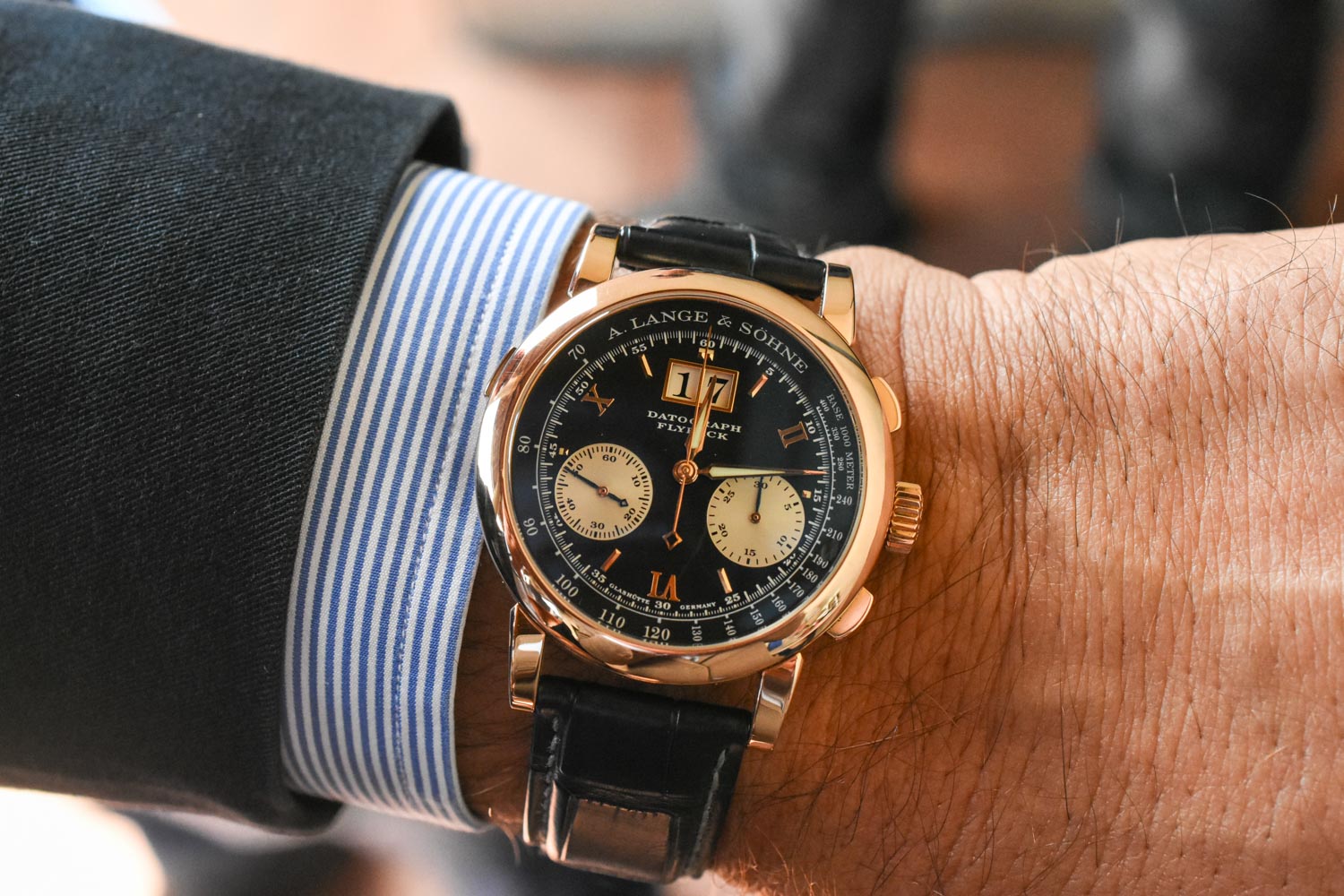
Although I love the sporty, almost laid-back (in Patek terms, of course) appeal of the ref. 5172G, there are a couple of things that didn’t seem right about this watch, no doubt features that have delighted others. In my eyes, the Patek is an amalgamation of bits and pieces picked up from other models in the company’s vast repertoire: pushers from historical ref. 1463; syringe-style hands and luminous Arabic numerals from ref. 5320 perpetual calendar; and those stylish lugs, also borrowed from ref. 5320 (in turn borrowed from ref. 2405 from the 1940s)…
It’s perfectly legitimate to dip into one’s heritage, but the elements have to form a coherent whole. Although the tiered lugs are absolutely beautiful, adding a glamorous touch of Art Deco styling, I was torn. Do these fancy lugs really belong on a sporty chronograph? Then there were the piston pushers. They might capture the vintage vibe perfectly, but the fact that they poked out so far beyond the crown and dug into my wrist on occasion didn’t convince me. The movement, albeit finished to Patek’s exacting standards, is colder and simply less enthralling than the Lange.
Which is your favourite? And why? We’d love to hear from you so please feel free to post your comments in the box below.

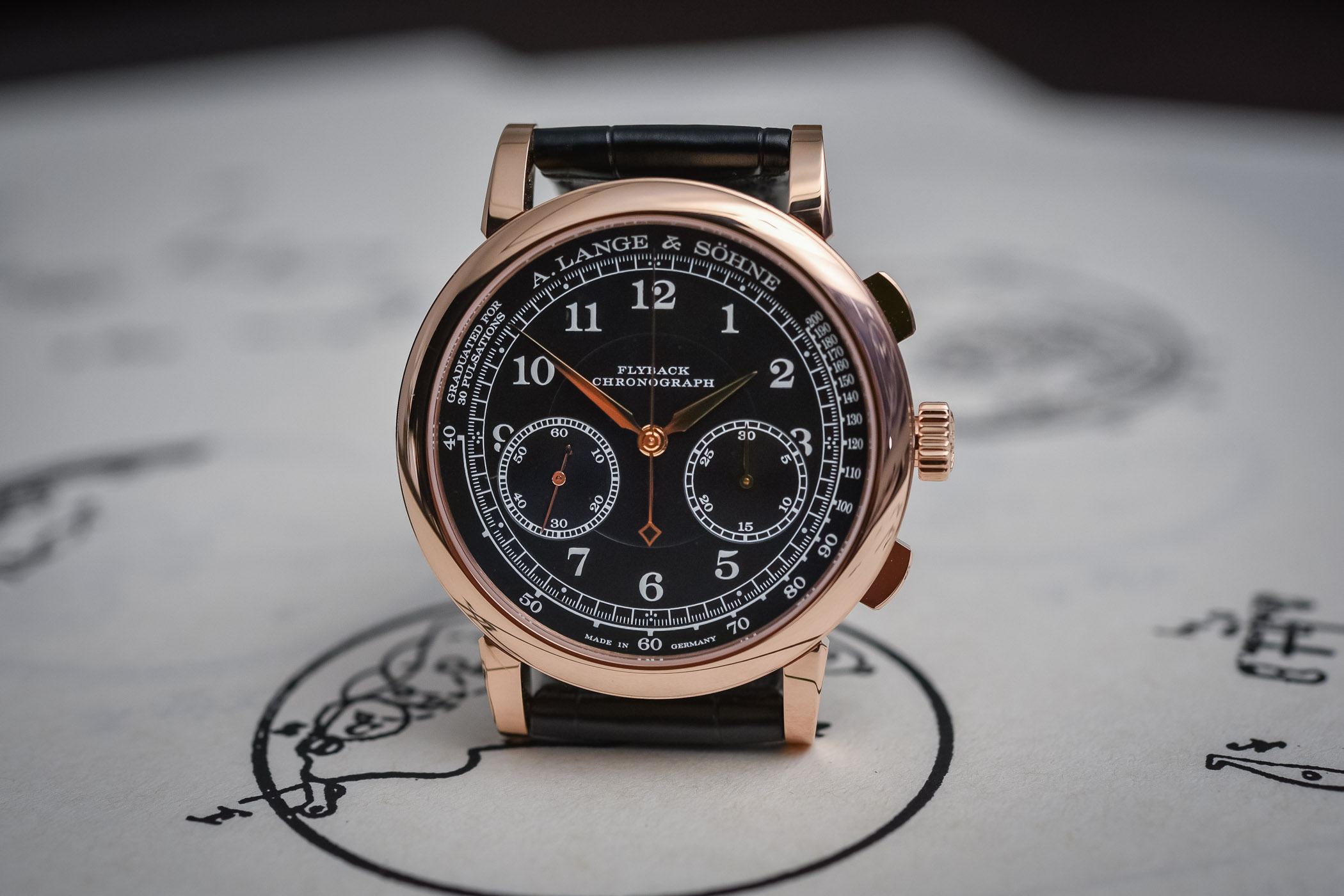
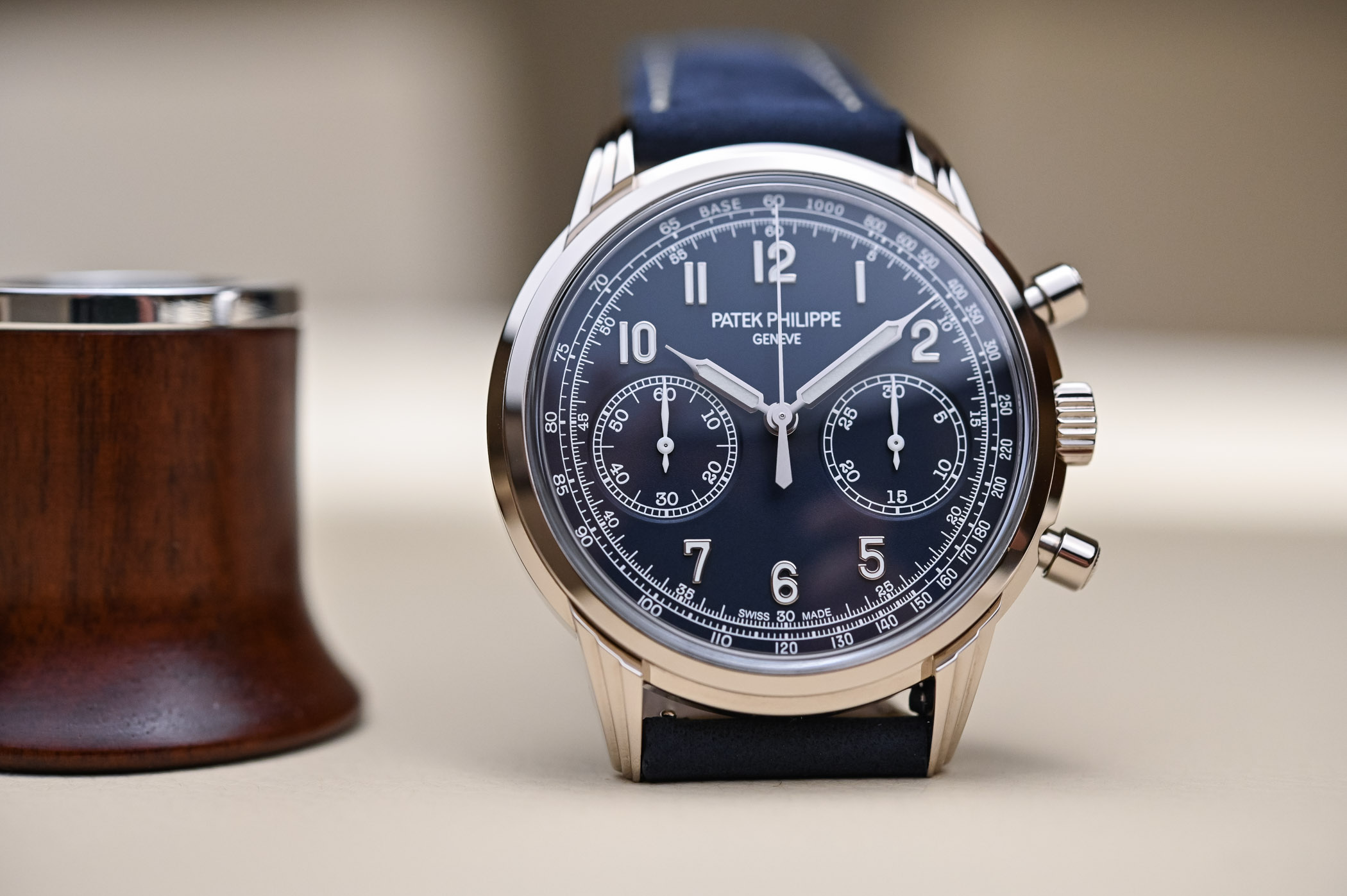
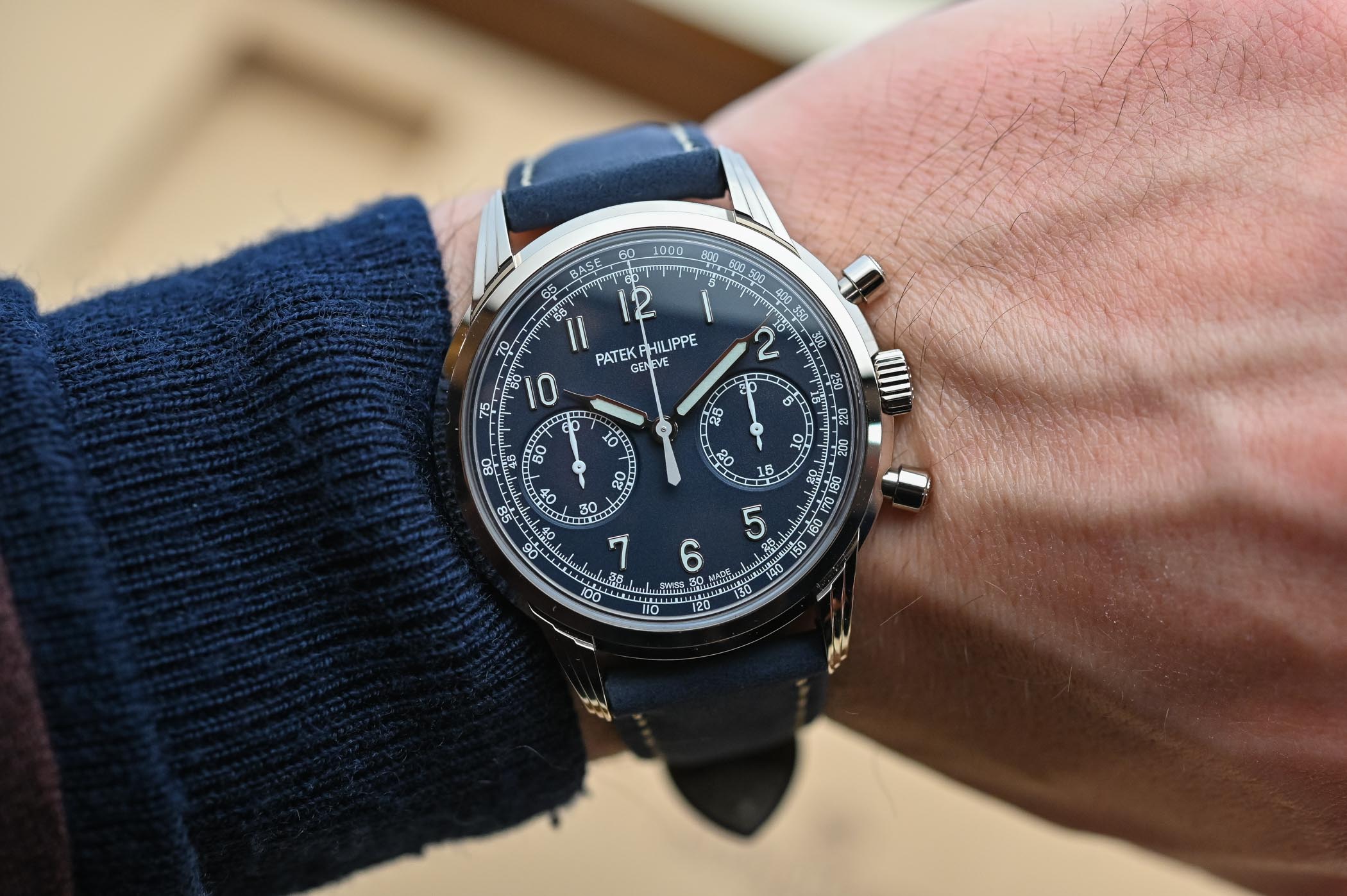

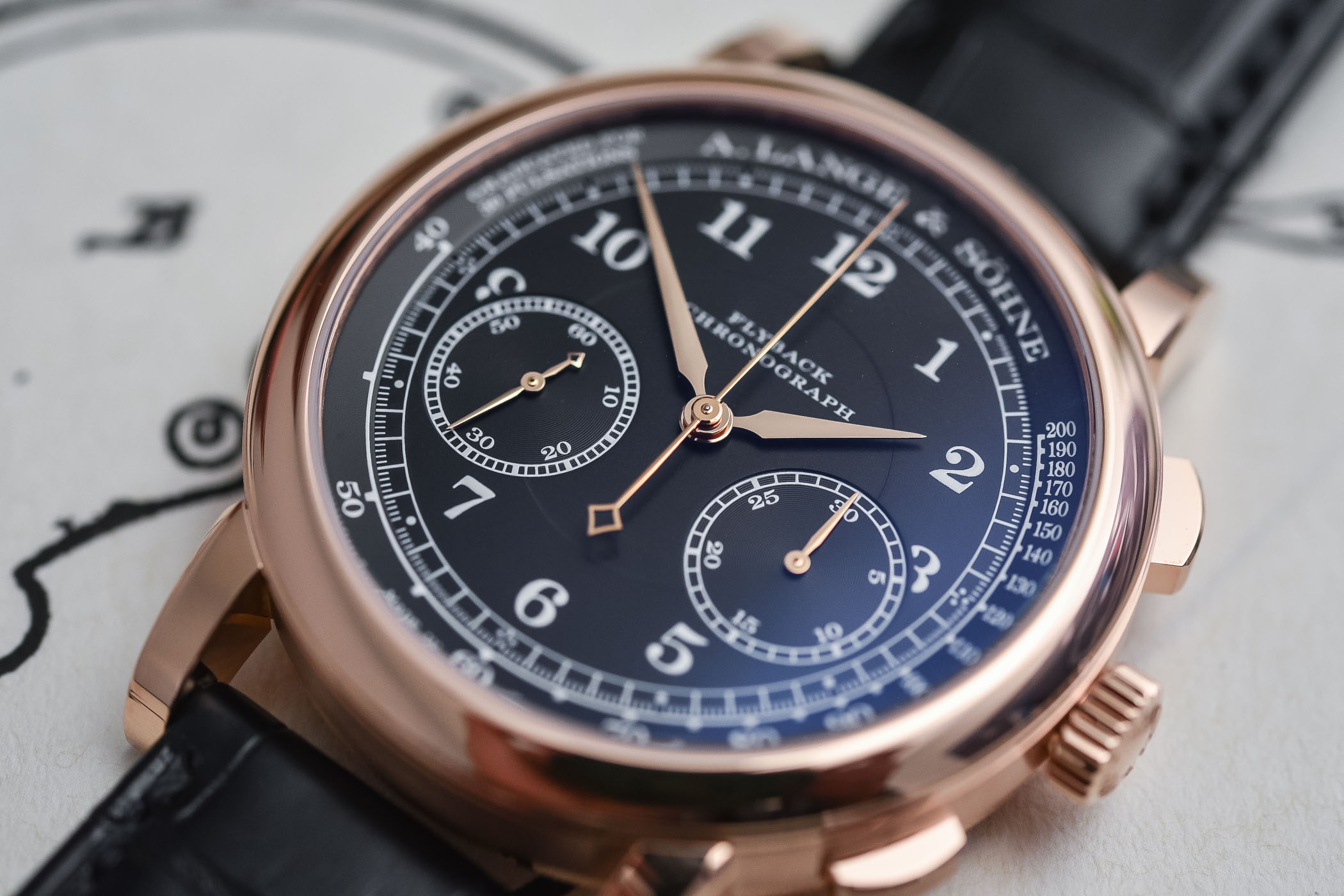
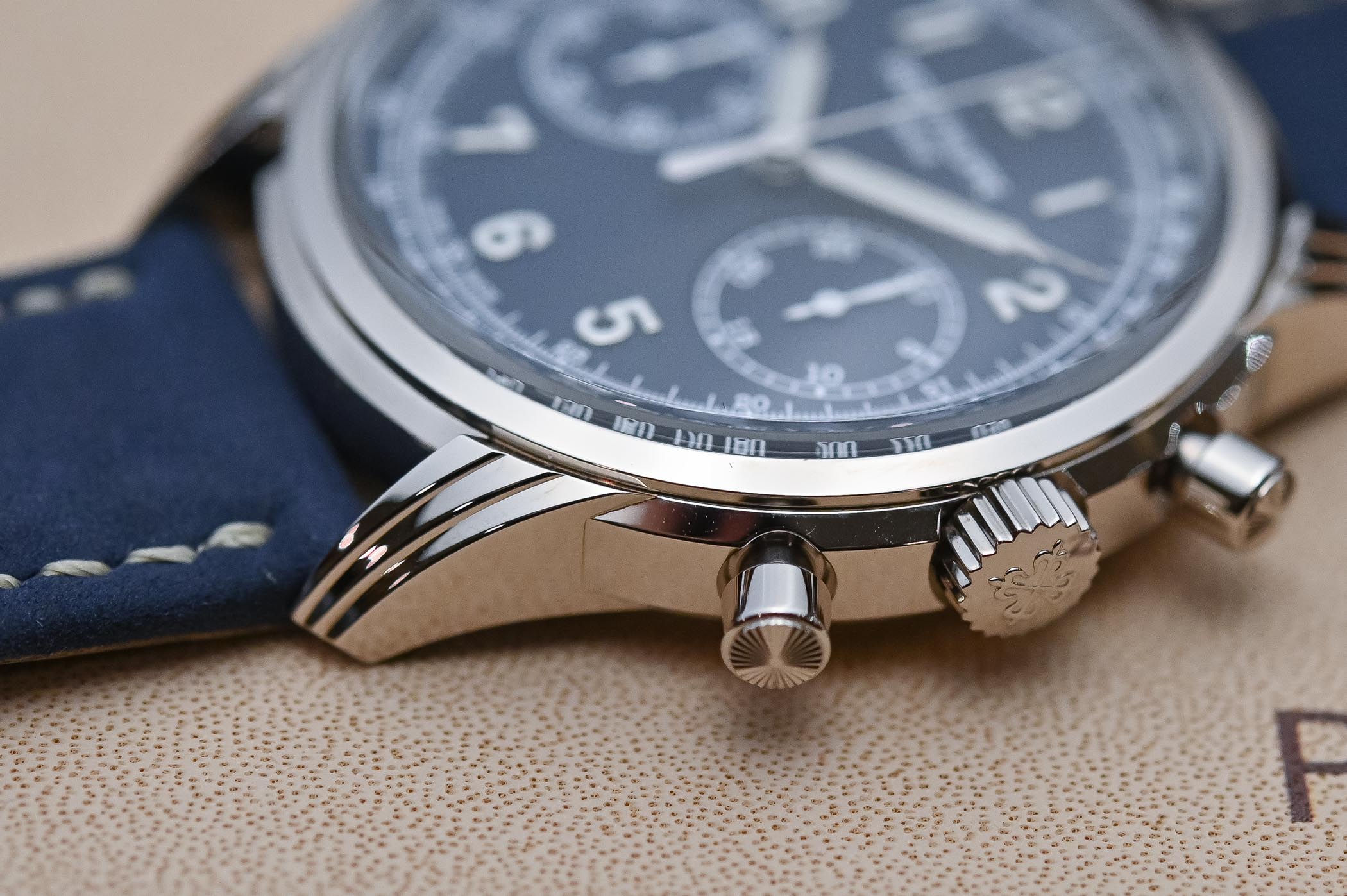
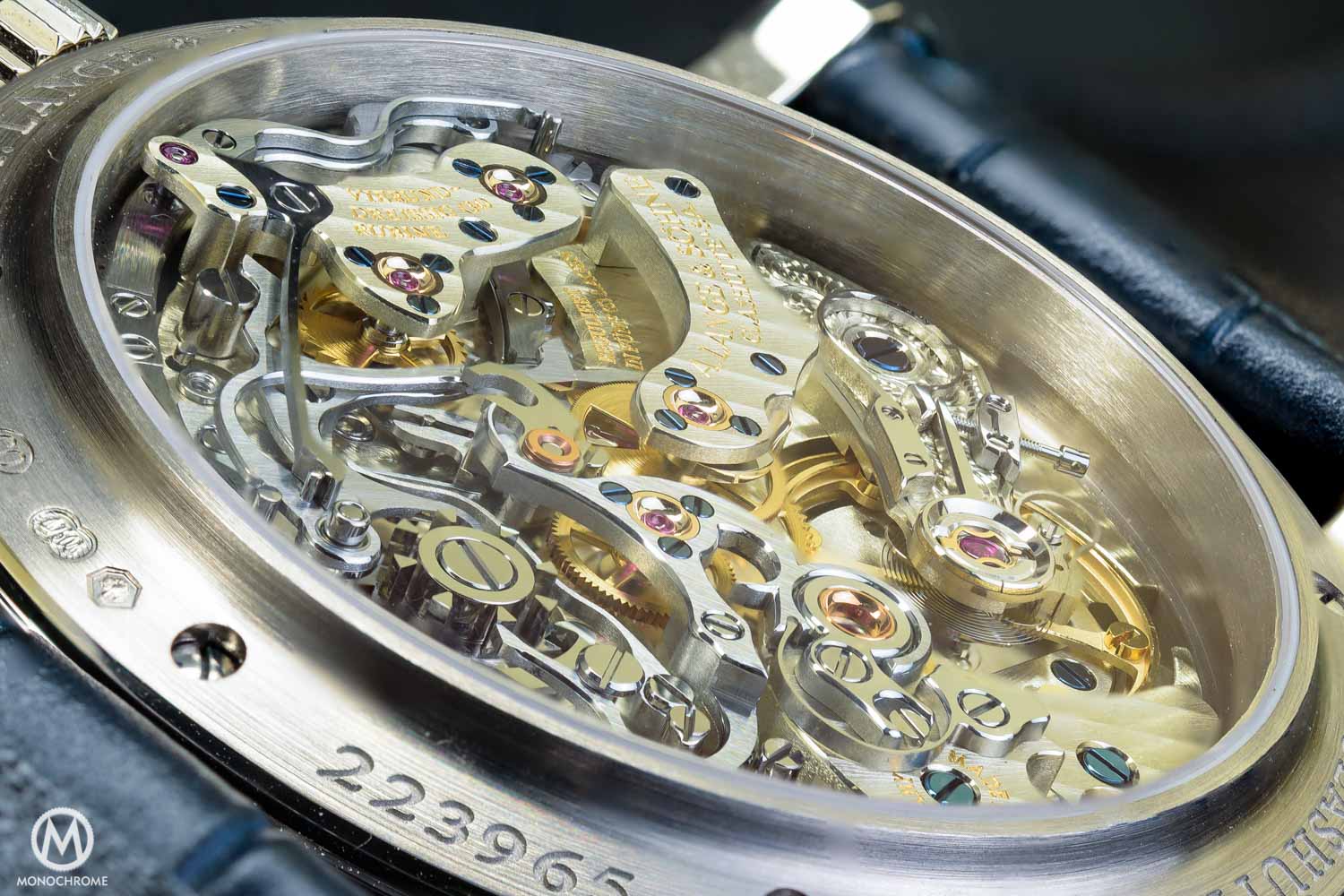

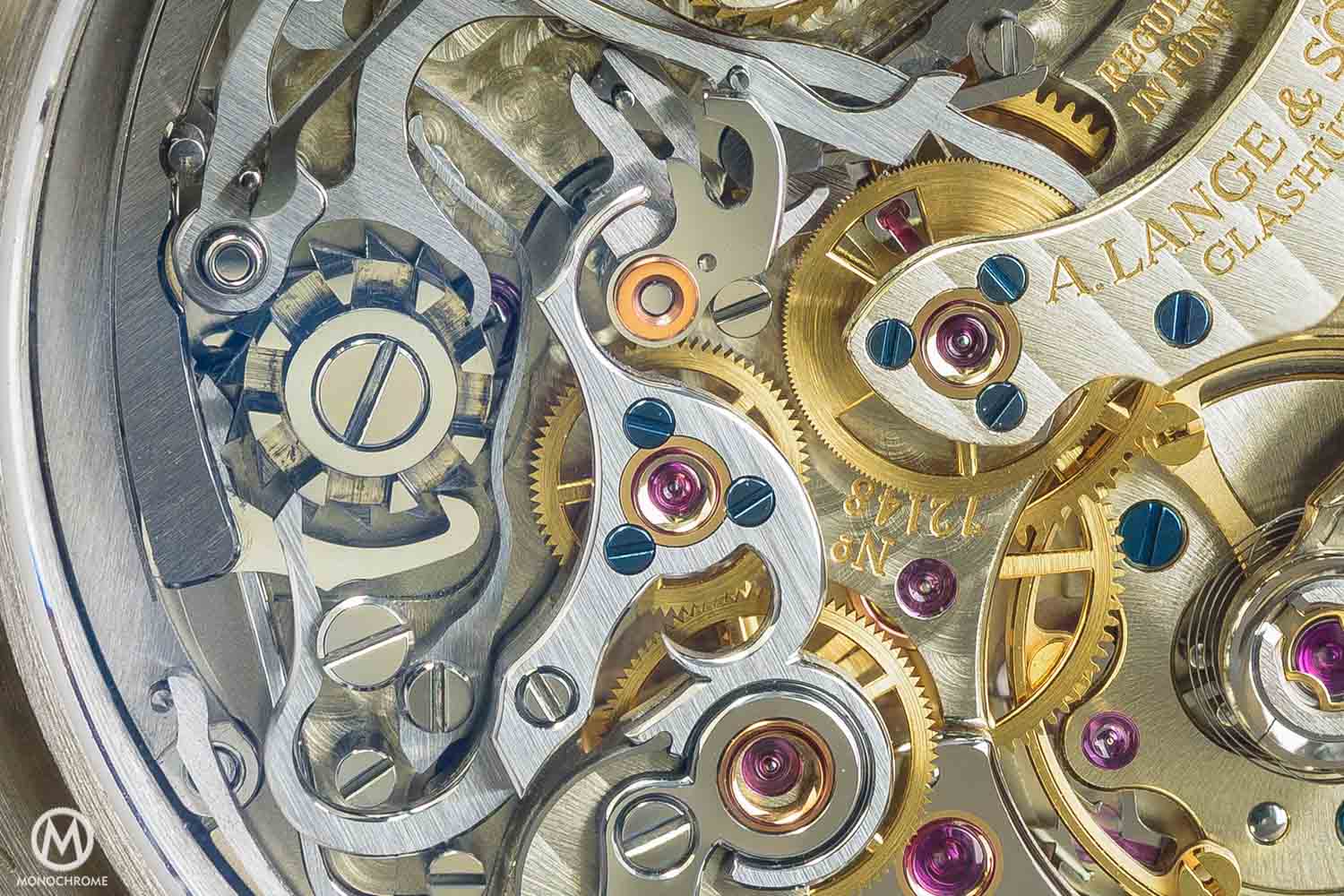
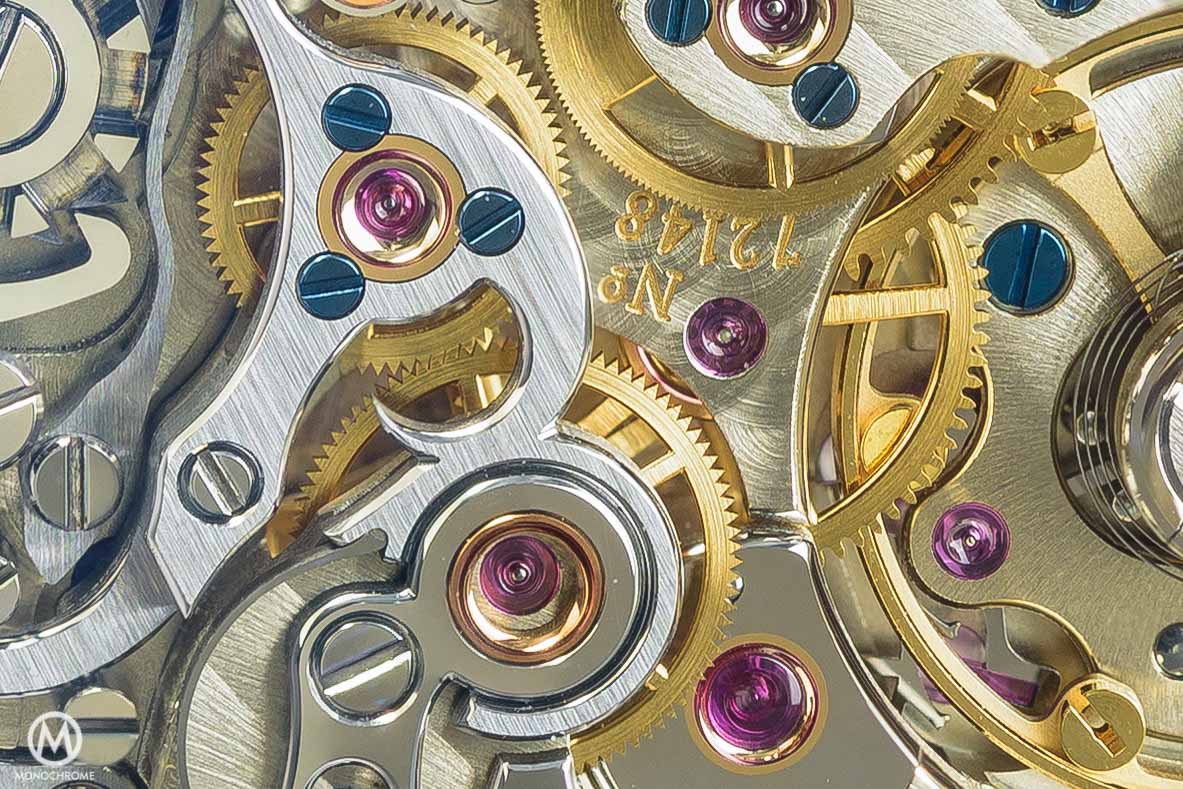




15 responses
“In my eyes, the Patek is an amalgamation of bits and pieces picked up from other models in the company’s vast repertoire…”
Yes! Well put.
+1 for L&S.
I think everything is said on your statement: “Patek’s movement is decorated with just enough flourishes to obtain its own in-house seal but it doesn’t offer the intricate level of hand-finishes and visual complexity of the Lange”. And after this add 15.000
Great reviews but you need to fix one of your links in the beginning. Also, it would help if you clearly placed links to parts 1 and 2 rather than embed them in the article.
I am going for the 1815 because it’s classier and looks more like a $55k watch. The PP does not look like a $73k watch to me. Maybe in rose gold with a bit more formal dial design like the 5170?
I remember the CH 29-535 also has a precisely jumping minute counter, doesn’t it?
If I have to choose one from these two watches, no doubt I will pick the 1815.
In case of doubt, buy both!!!
Does anyone actually use these things? I had a chronograph about 40 years ago, I thought it looked useful but discovered quite quickly that it was not.
@Chia-Ming Yang: it certainly does, and the very particular shaped gold lever can be seen between the PP seal bridge and the balance bridge.
@Phil: I certainly use mine. They are objectively useful, but it’s up to the owner to use them (or not). If you don’t want to measure elapsed time, then clearly their extra functionality is wasted. I find that I do want to measure time intervals – walking, cooking come to mind.
Honestly, I think this battle could’ve been more varied as the market has other great manually wound chronographs to offer, e.g. Cornes De Vache by VC, Duometre Chronograph by JLC and 1858 Monopusher Chronograph from Montblanc just to name a few. I’m not saying that the article is bad, but it’s more of a brawl in a local alley than an actual battle.
Quality of finish is the same.
It’s a matter of what kind of style you prefer. Low-profile or more in your face.
I prefer the looks of the Patek.
@Vagn
Preaching to the choir here about the Cornes de Vache: one of the best looking Chronographs out there. It does seem a little unfair having Lange feature in both of these battles so far, but just wait until the next one for a bit more variety – battle of the asymmetric dials with double-window big dates.
1815 is my winner, no doubt. What I do prefer in the PP is the more ”organic” flow from case to lugs, in all other aspects i favour ALS
I agree completely with your conclusion. Much as I want to like the Patek, it just doesn’t stack up either movement-wise or stylistically against the ALS. Those lugs are a great example of why the Patek doesn’t work – stepped lugs on an otherwise sporty watch? Doesn’t make sense…5170s were far more coherent.
Patek 5172G is the choice for me. It’s a beautiful, understated masterpiece made aware to people in the know. I wish it was 39.5mm however.